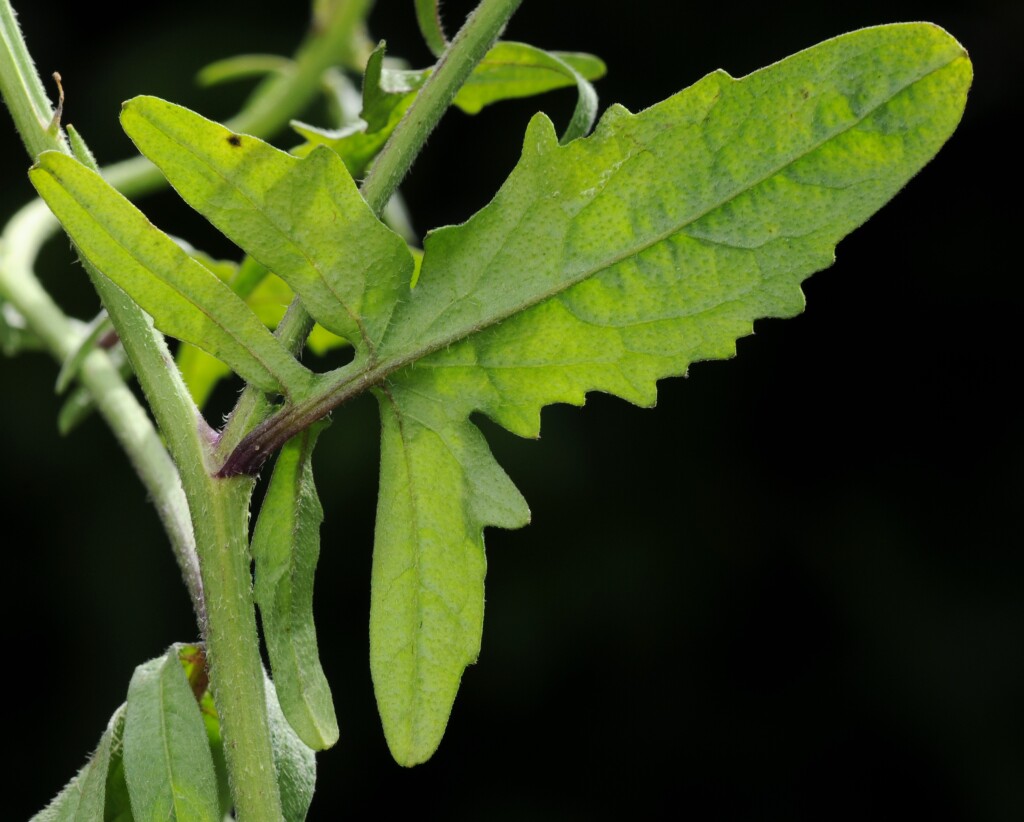Sisymbrium officinale
(L.) Scop. Hedge MustardAnnual or biennial, to 90 cm high, with coarse hairs on lower leaves and stems. Stems usually stiffly branched, often purplish. Basal leaves in rosette, to 25 cm long but often much shorter, deeply pinnately dissected with 3–5 pairs of lateral lobes, margins toothed; stem leaves smaller towards inflorescence. Sepals 2–3 mm long; petals 2–4 mm long. Fruit erect, narrow-conical, straight, 1–2 cm long, c. 2 mm wide at base, often purplish; style indistinct, 0.5–1 mm long; pedicels appressed, 1–3 mm long. Flowers mostly spring.
LoM, MuM, Wim, GleP, VVP, VRiv, MuF, GipP, OtP, WaP, Gold, CVU, NIS, EGL, EGU, HSF, HNF, Strz, MonT, VAlp. Naturalized all States except NT, also New Zealand, etc. Native to Europe, North Africa, Asia. A common weed of agriculture, but widespread through a range of habitats.
No other Brassicaceae in Australia have appressed fruits which are narrow-conical in shape.
Entwisle, T.J. (1996). Brassicaceae. In: Walsh, N.G.; Entwisle, T.J., Flora of Victoria Vol. 3, Dicotyledons Winteraceae to Myrtaceae, pp. 399–459. Inkata Press, Melbourne.
 Spinning
Spinning




